Exploring 40 Ancient Egyptian Mysteries About The Great Pyramid Of Giza
The Great Pyramid of Giza is one of the most fascinating structures ever built. It was completed about 4,500 years ago and has stood as a silent sentinel ever since. From the massive stones that make up its exterior walls to the inner chambers with their hieroglyphic art, no other archaeological site on Earth offers so much to explore.
It’s easy to see how this building has captured our collective imagination for millennia. For many people around the world, it remains an object of reverence and awe because there are still mysteries waiting to be solved. So, let’s dive in and unlock the secrets many of us are eager to discover.
1. The Start of Discoveries
Recent research by Dr. Tayoubi and scholars from Cairo University have led to the discovery of a void in the center of the Great Pyramid. This discovery was made possible due to new sonar technology that can detect objects inside solid structures.
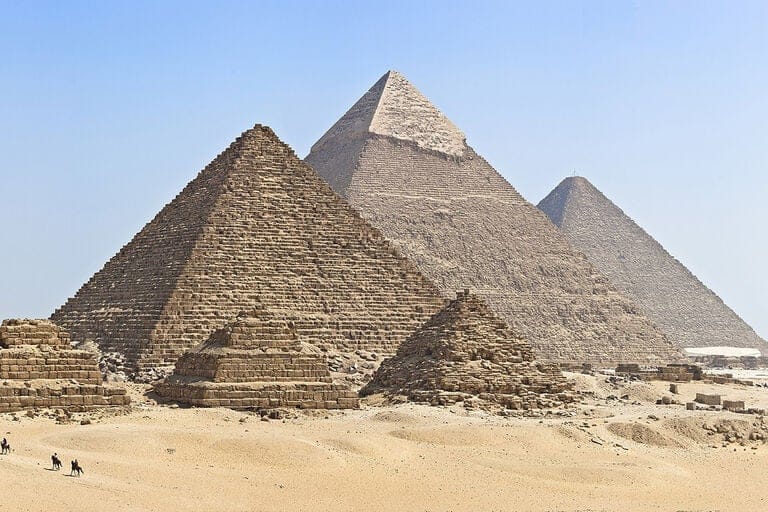
KennyOMG/Wikimedia Commons | CC BY-SA 4.0
The finding offers many possibilities for future research looking into the possibility that something might be hidden within this central void. Even if it’s empty, one thing is certain: we’re closer than ever before to understanding this ancient wonder!
2. Method of Construction
Egyptians created the Great Pyramid of Giza during the Old Kingdom period. It has been estimated to have taken around 20 years to build. The pyramid was built using millions of blocks weighing two to 30 tons each. These were quarried from nearby limestone bedrock.
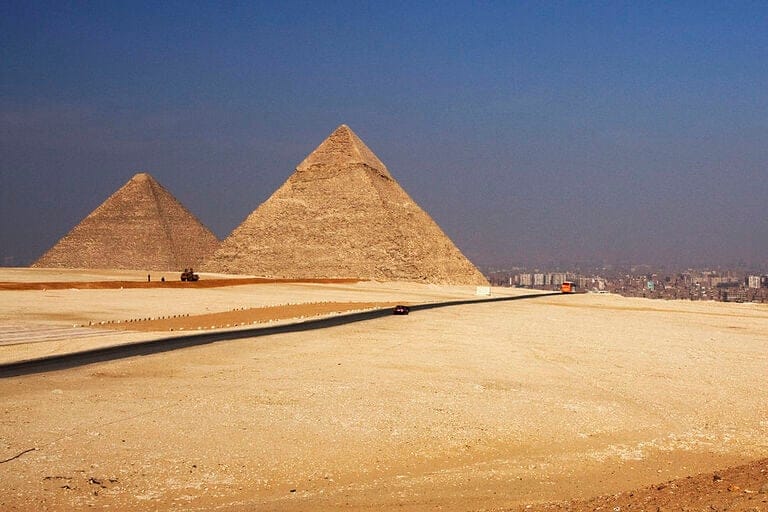
Ian Sherlock/Wikimedia Commons | CC BY-SA 2.0
The method used to build the pyramids at Giza is similar to the brick veneer style used in modern times. However, the Egyptian style of laying bricks is far different from what we are used to today. Experts are still puzzled about how the Egyptians built the pyramids.
3. Oddly Structured
The Great Pyramid of Giza is not only known for its size but also for its layout. Its appearance and structure show that it has a remarkably precise alignment. There are three main theories about how it and the surrounding pyramids were made: ramps, levitation, and sliding blocks.
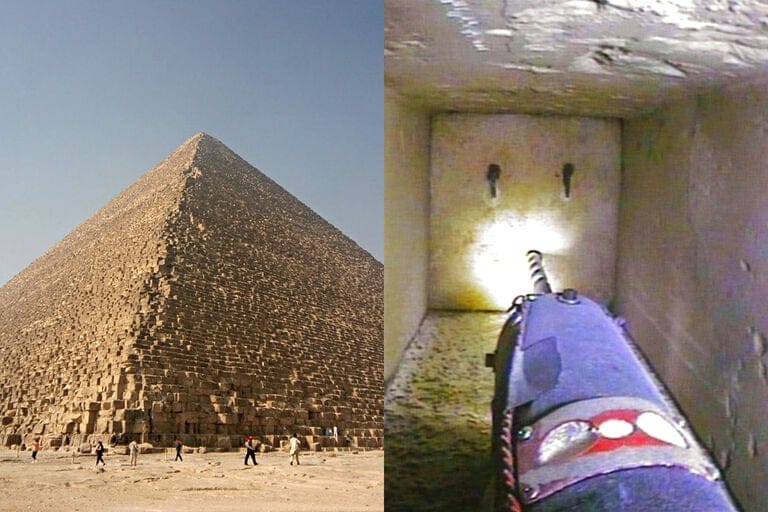
Nina/Wikimedia Commons | CC BY-SA 3.0 | CHAPUIS PATRICK/Gamma-Rapho via Getty Images
Pyramids are built on an inclined plane, allowing them to be constructed without a huge number of people working at any given time. Though these pyramids have been studied for centuries, no one knows exactly how they were constructed or why they are so uniquely shaped.
4. Pyramid Laborers
Pyramid lovers have long speculated about who built the pyramids. Some believe that slaves did it, while others claim King Cheops or other Egyptian leaders had a hand in constructing the structures. Still, there’s no conclusive evidence yet.
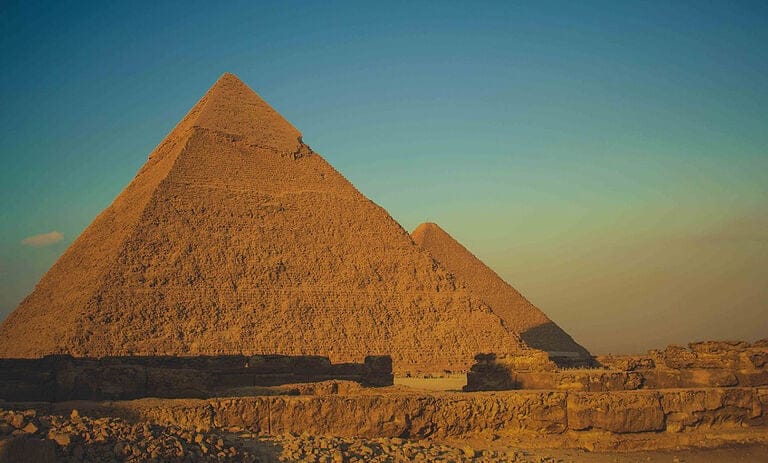
smaiel/Wikimedia Commons | CC BY-SA 4.0
Most professional researchers think that everyone involved – quarry workers, masons, haulers, and the like – got paid. These laborers came from families belonging to Upper Egypt and the Delta region. Pyramids were built for a pharaoh to become a god in the afterlife, so theories of “slave workers” seem ridiculous to many.
5. Burial Place
The pyramids are a reminder of the ancient Egyptian belief that they would become gods upon death. They built pyramids to be burial places for pharaohs and their queens. This theory arose when researchers found well-preserved mummies in tombs surrounded by sacred objects.
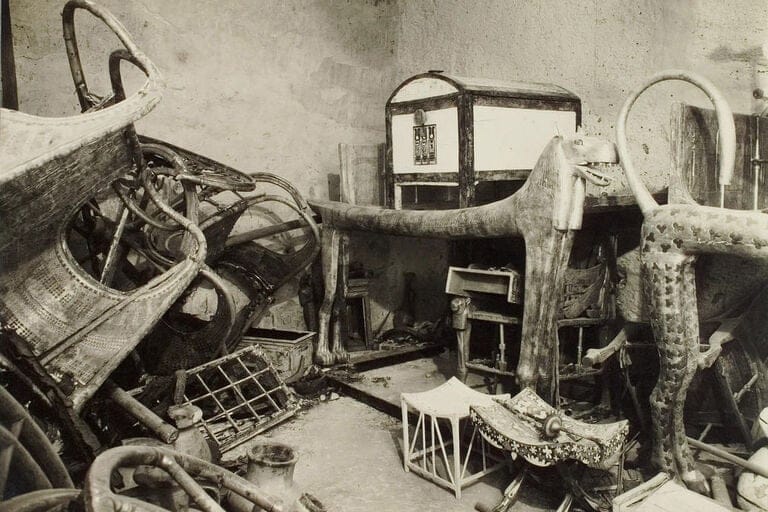
Harry Burton/Wikimedia Commons / {{PD-US-expired}}
The most well-known pyramid burial ground is the Great Pyramid, which is the oldest and largest in Giza. In this pyramid lies the tomb of King Khufu alongside Queen Hetepheres, Khufu’s mother. However, only their broken sarcophagus (coffin) was discovered – their actual bodies were nowhere to be found.
6. More than Just a Cemetery
The pyramids of Egypt are not just a place for dead bodies to rest – they also offer insight into the culture and lifestyle that once existed in this desert landscape. Many of these sites contain decorated tombs that show us what life looked like in ancient times.

Raffaele pagani/Wikimedia Commons | CC BY-SA 4.0
Tombs like this speak volumes about ancient Egyptian society. Scenes range from warriors fighting on chariots to depictions of daily activities like farming and fishing. The artistry that went into creating these pieces is nothing short of stunning – the ancient Egyptians put a lot of time and effort into it.
7. Stunning Artistry
Ancient Egyptian artists were remarkable, both in terms of how they painted and what they chose to paint. Many of the stories depicted on pyramid walls show religious practices (like mummification), ritualistic dances, and images of their deities.
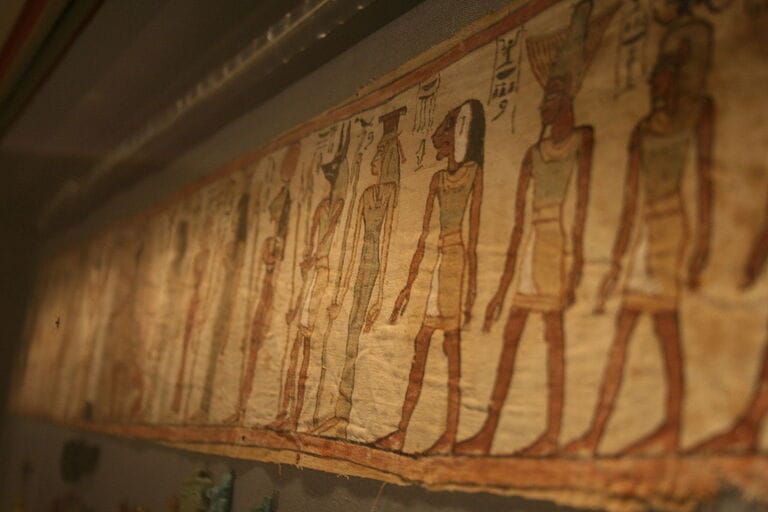
Marco Almbauer/Wikimedia Commons | CC BY-SA 3.0
Their artwork proves that ancient Egyptians were not only known for their fertile land and spectacular temples but also for creating one of the most impressive art forms in history. The beauty they saw within themselves allowed them to create works that still haunt us with their realism – it’s like you’re there!
8. Exterior Construction
The Great Pyramid is without a doubt one of the most famous structures in all of history. It consists of approximately 2.3 million stones that collectively weigh nearly 6 billion tons – that’s more than 12 Empire State Buildings! Can you believe that?
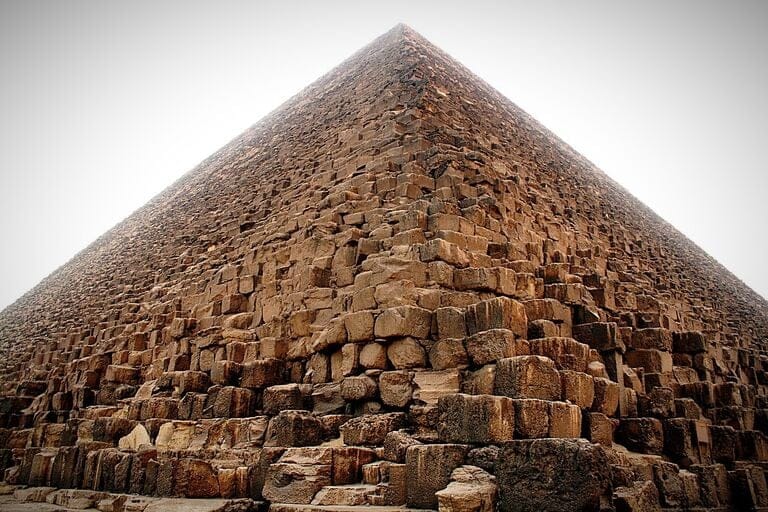
Hedwig Storch/Wikimedia Commons | CC BY-SA 3.0
The pyramid’s basalt structure shows “clear evidence” that many stones were cut with some kind of copper saw, and others were chiseled out with hand tools. Although experts have all kinds of theories to explain this, it’s still unknown exactly how this pyramid was built.
9. Use of a Ramp System
Pyramid construction is still a mystery for many people. One question that has not been answered yet by archaeologists is, how did they get all those stones up there? Some speculate that they used ramps in building the pyramids.
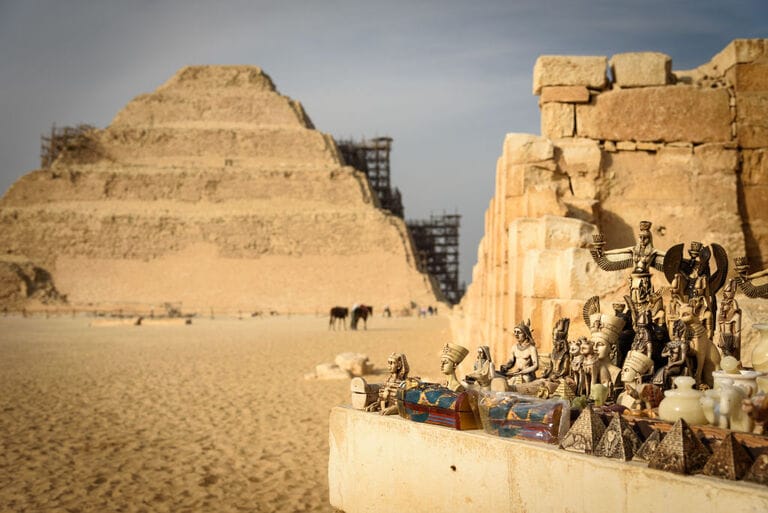
Photo by: Stefan Lippmann/Universal Images Group via Getty Images
These theories began when researchers found a 4,500-year-old ramp during excavation work in a quarry near Giza. This could have been used to move the heavy blocks into place. The ramp has been studied closely ever since, but the evidence remains inconclusive.
10. Alien Theories
Many people are still trying to understand how the pyramids were constructed. One theory is that the strange layout of the Great Pyramid of Giza has to do with ancient aliens. However, at the moment, there’s no hard evidence to support this claim either.
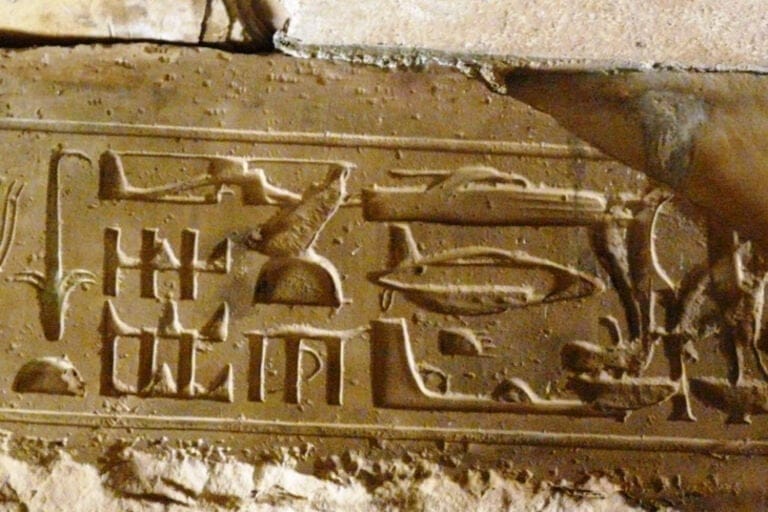
Olek95/Wikimedia Commons / {{PD-US}}
What do you think? Is the Great Pyramid of Giza an indication that aliens once existed on Earth? Those hieroglyphs above sure do look like spaceships! However, the only thing that is clear now is that there are still mysteries to be solved.
11. Mysterious Interiors
One of the most compelling mysteries about ancient structures like pyramids and temples surrounds how they were built. It isn’t just their immense size that captures people’s imagination; it’s also the fact that there are puzzles inside that haven’t been solved yet.
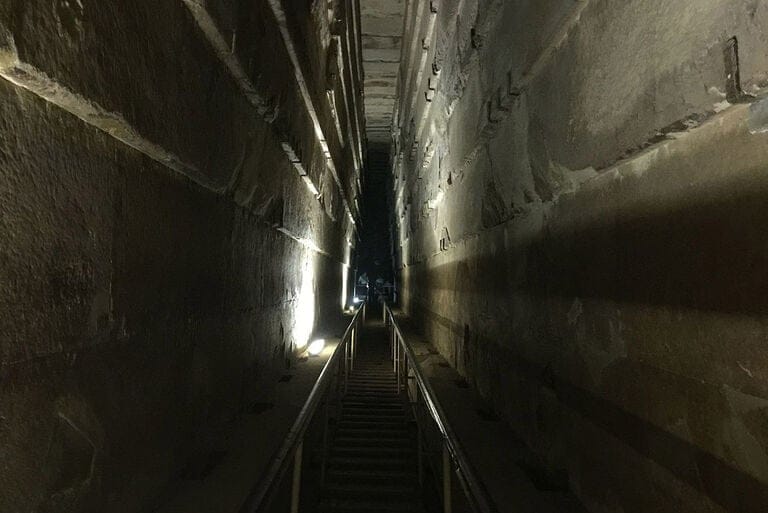
Keith Adler/Wikimedia Commons | CC BY-SA 4.0
The room pictured above is known as the Grand Gallery, and it lies between the King’s Chamber and the Queen’s Chamber. It’s a dark space with no murals or carvings – just an empty void with lofty walls lined by massive blocks from Egypt’s Aswan quarry.
12. The Grand Gallery
The Grand Gallery in the pyramid is a tight and steeply slanted hallway. It is one of the longest straight passageways in Egypt. The gallery was discovered in 1881 by Sir William Matthew Flinders Petrie, who excavated most of the Central Valley pyramids.
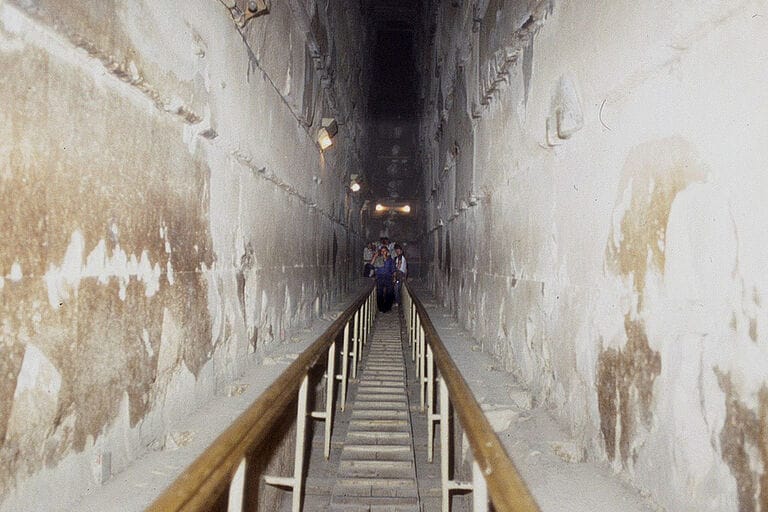
Mike McBey/Wikimedia Commons | CC BY 2.0
Still, it remains one of his lesser-known discoveries. It is unique among ancient Egyptian architecture for its shape. The hall is about seven feet wide, 153 feet long, and 26 feet high. Some experts believe it was designed to direct water away from the pharaoh’s burial chamber below.
13. The King’s Chamber
The discovery of hidden chambers deep inside the largest pyramid at Giza has sparked a new round of speculation about one of humanity’s most enduring puzzles. One of these chambers belongs to King Khufu. His room is made of granite and was designed to withstand immense pressure.
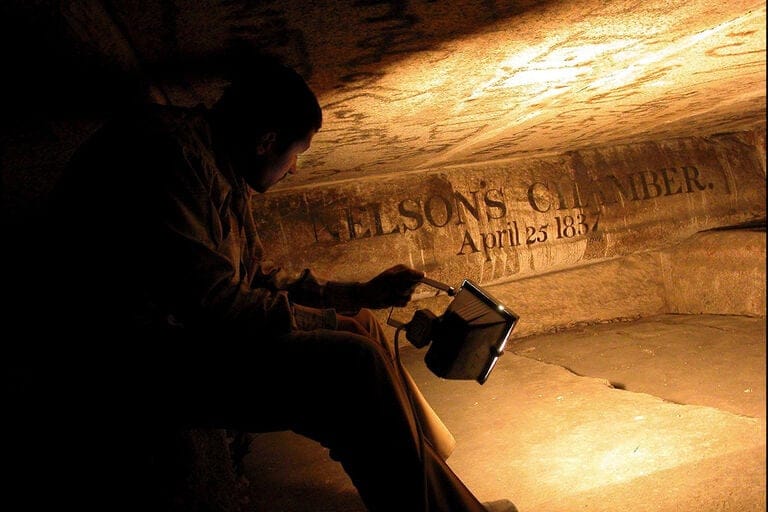
Patrick CHAPUIS/Gamma-Rapho via Getty Images
From these chambers, there are two narrow shafts that run out to the exterior of the pyramid. The reason for this design feature is unknown, but it was most likely installed for ventilation or religious purposes.
14. The Controversial Queen’s Chamber
The Queen’s Chamber is not what you would expect it to be. Researchers believe it was never intended as a burial site for the Queen. Instead, it may have been used to store gifts meant to honor the passing of King Khufu.
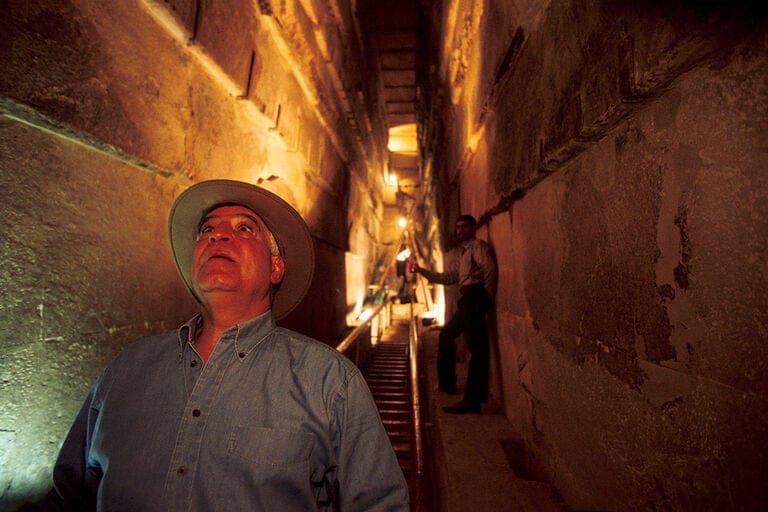
Patrick CHAPUIS/Gamma-Rapho via Getty Images
Three strange objects were found in the Queen’s Chamber, then lost, then found again. These include a granite sphere and two wooden slats, which British engineer Waynman Dixon originally discovered. A copper object shaped like a hook was also present during Dixon’s original excavation back in 1872.
15. Made of Limestone
The walls of the chamber are made entirely from limestone blocks that sit atop twenty-five layers of masonry below. Although pink granite can be seen before entering the Queen’s Chamber, researchers think there used to be a lot more of the stuff before it was stolen by explorers.
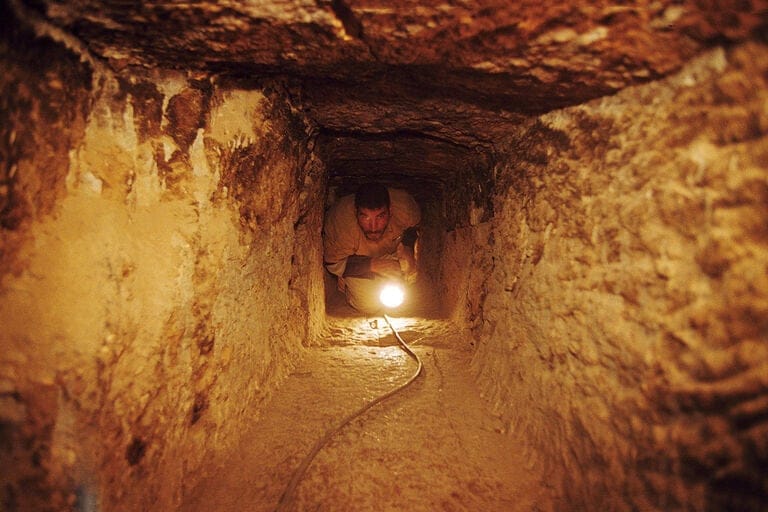
Patrick CHAPUIS/Gamma-Rapho via Getty Images
It has an eastern wall that rises about fifteen feet or so. Perhaps there was a statue or figurine placed there long ago, but there’s not much hard evidence for that claim. Other than that, the wall has no paintings, murals, or carvings.
16. Mysterious Passageways
Experts are still scratching their heads as to the purpose of these tunnel systems or air shafts in the Queen’s Chamber and the King’s Chamber. These passageways are about twenty centimeters square, and as you can see from the picture below, they’re not entirely straight.
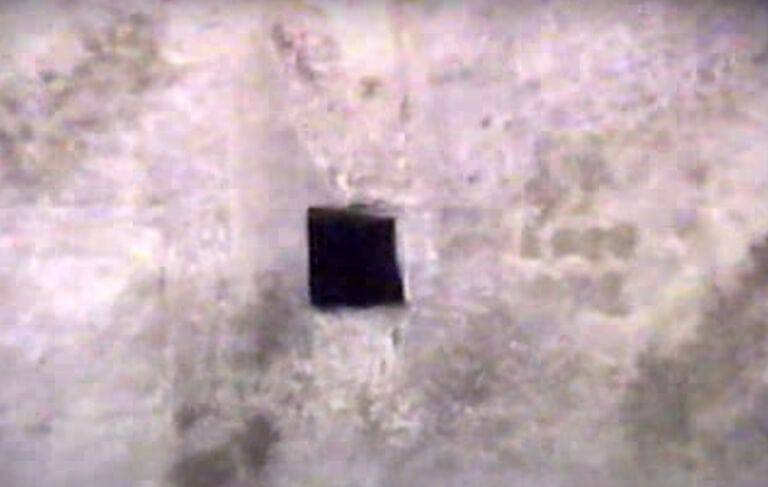
VisionaryDance/YouTube
In 1993, a robot was sent inside the air shafts to see what researchers could find. As it reached the end of the southern air shaft, the robot encountered a limestone slab that had some copper metal rings attached to it. Was it a door? What was on the other side?
17. Secret Door
In 2002, researchers took another shot at finding the purpose of these secret doors. They used a smaller robot to reach the same door and then drilled a small hole in it. A camera was sent inside to explore.
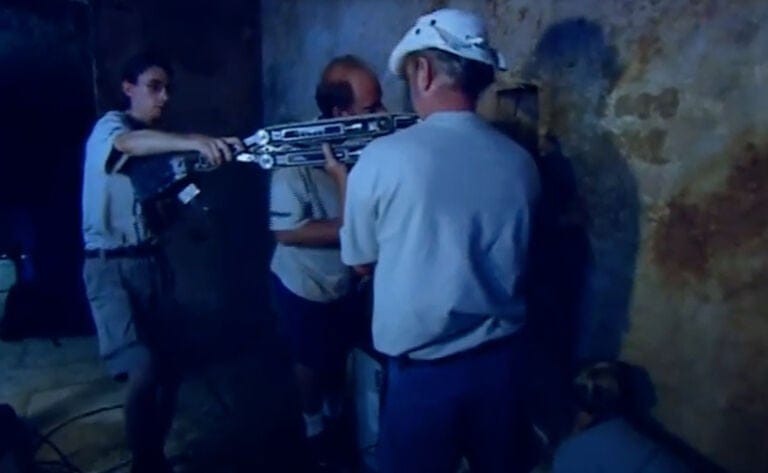
The Last Pyramid Builder/YouTube
However, the camera didn’t get too far before finding another door – the mystery grew! The results fascinated the researchers and led to more speculation. When Dr. Hawass heard the news about the doors, he knew it was an important find for archaeologists.
18. The Djedi Project
The Djedi Project has been using cutting-edge technology and robots to probe some of the mysteries surrounding the Great Pyramids. The team of robotics specialists, engineers, programmers, and archeologists managed to map out the pyramid structures in great detail.
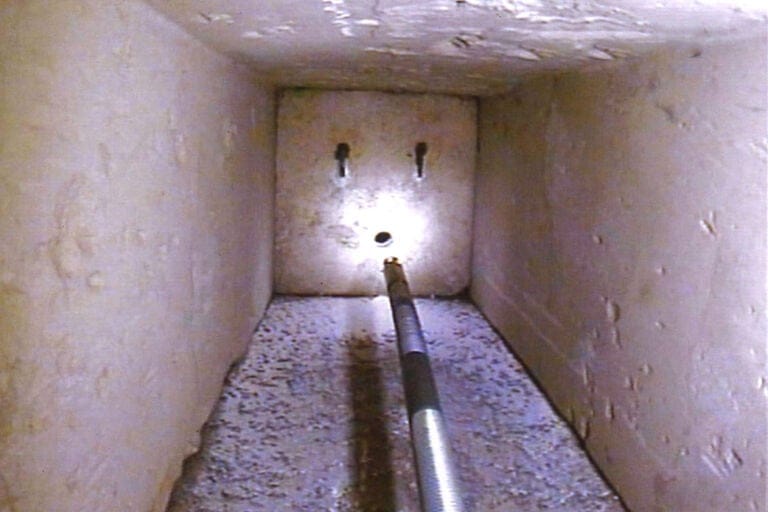
CHAPUIS PATRICK/Gamma-Rapho via Getty Images
The robots created for this project are far more adept than those deployed in earlier missions. Some of their capabilities include a pinhole camera that allows them to see around corners, a device that can determine the thickness of the stone, a compass that can determine exact coordinates, and a highly precise drill.
19. Djedi Discoveries
According to the evidence found by Robert Richardson and his Djedi team, it is possible that these shafts were built as part of complex religious ceremonies. The stones were carved with red hieroglyphics that hold clues that have yet to be deciphered and interpreted.
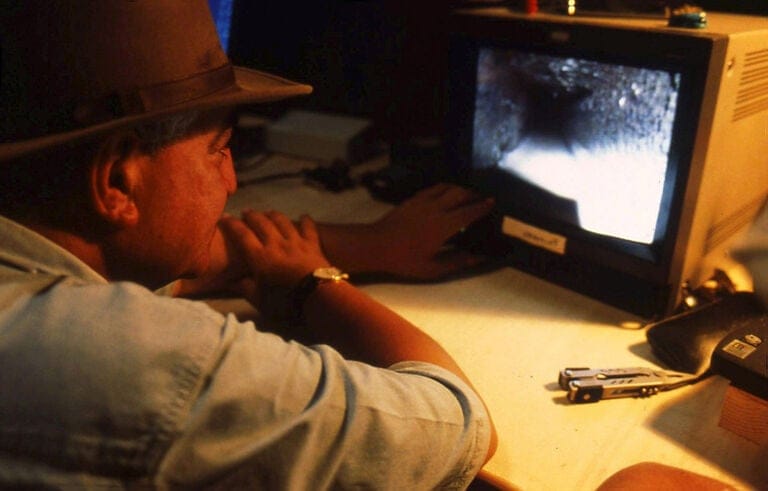
Patrick CHAPUIS/Gamma-Rapho via Getty Images
The camera was able to see around corners and reveal what was on the backside of the slab. Metal pins are clearly visible in the images sent back by the robot. Researchers think that the door handles are symbolic and may be connected to the stars.
20. Impressive Temperature
The average temperature inside the pyramids may surprise you. Despite the fact that there are no windows and no entryways for fresh air or sunshine to slip in, the temperature manages to stay at a cool 60 degrees Fahrenheit. Not too hot, not too cold!
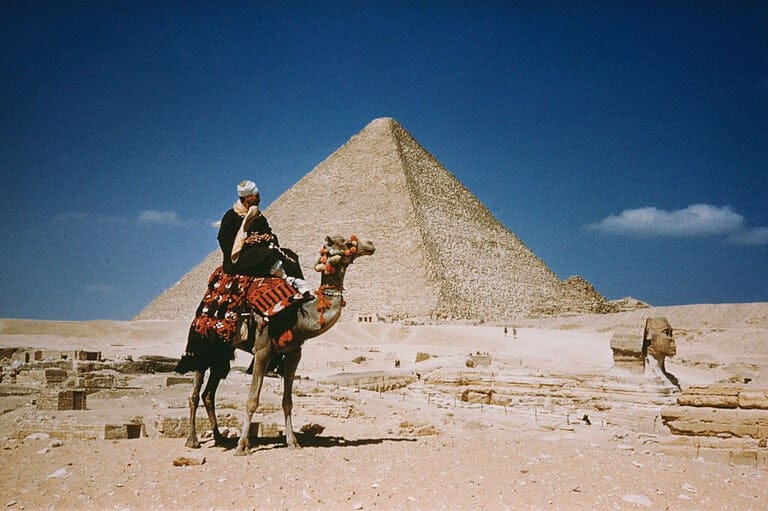
Archive Photos/Getty Images
Wondering why? In order to keep their interior chambers from getting too hot or cold, builders placed large stones at each end, just outside the outer walls. This helps to regulate temperature. Remember, the pyramids were built as tombs, so they needed to stay cool.
21. How Did the Pyramids Look When First Built?
Much of our popular understanding of these ancient structures is wrong. That’s because they looked a lot different when they were originally built. Although the pyramids are still impressive nowadays, some say they were so astonishing back in ancient times that aliens must have constructed them.

Photo by Mohamed Mostafa/NurPhoto via Getty Images
That’s debatable, but what we do know is that they looked much different. Originally, they were made of polished limestone that glittered and glowed in the Egyptian desert. That’s why nowadays, Egyptians are lighting them up to recreate what the ancients might have seen.
22. Magnetic Walls
Scientists have determined that even now, the pyramids are emitting a charge. This doesn’t necessarily lead back to aliens, though! Conspiracy theorists love jumping to conclusions about this discovery, and many others like it, but conservationists say there are Earthly explanations.
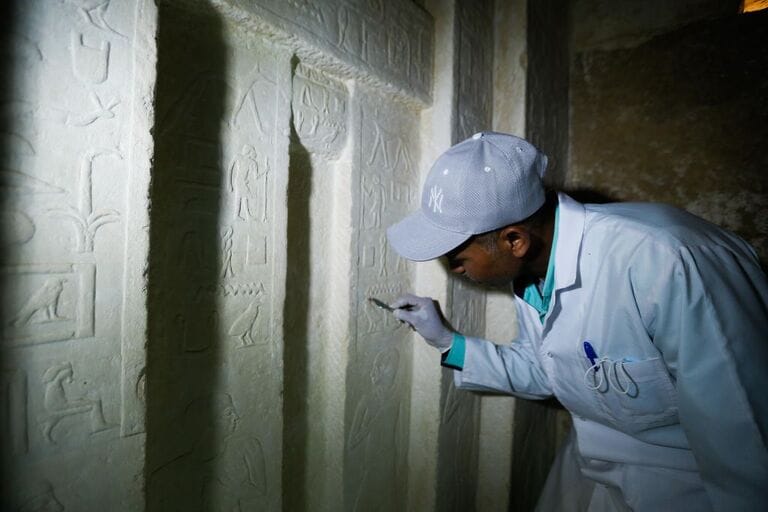
Photo by Mohamed Mostafa/NurPhoto via Getty Images
A team of international researchers has discovered new insight into how the Great Pyramid of Giza interacts with electromagnetic waves. They found that the pyramid can concentrate energy in its internal chambers as well as under its base, where there is an unfinished chamber that ancient Egyptian builders left.
23. Howard Carter’s Curse
Howard Carter is one of the most well-known archaeologists in history because he unearthed King Tutankhamun’s tomb. The discovery of Tutankhamun’s tomb in 1922 created global interest, and rumors spread that a curse would kill anyone who tried to break into it.
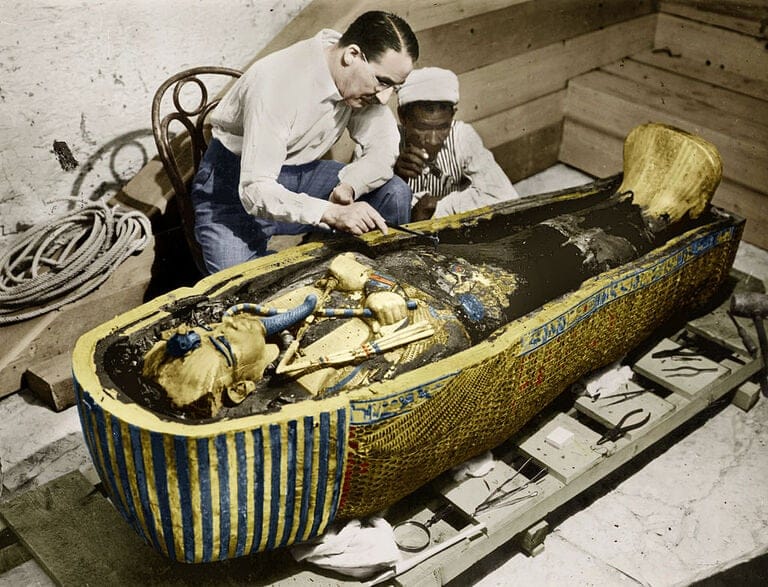
Photo by Apic/Getty Images
Although we can’t say if the curse is true or not, deaths did occur rapidly among members of Carter’s team. However, Carter managed to live 17 years after excavation, despite suffering from Hodgkin’s disease. He died in 1939.
24. Egyptian Offerings
You might be amazed to know that the ancient Egyptians had many customs related to death. For one, the Egyptian body would not have been buried immediately following cremation or burial at sea without any ceremony. They believed in an afterlife and embalming process for their loved ones.
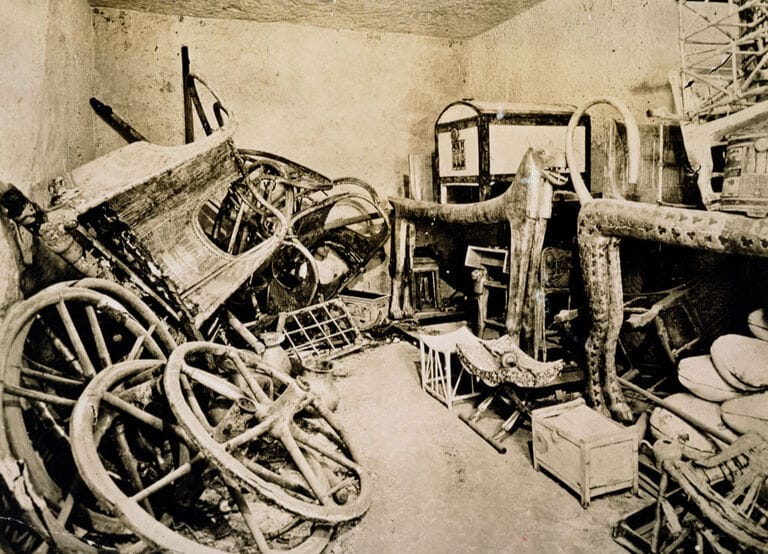
Photo by Historica Graphica Collection/Heritage Images/Getty Images
They also placed great importance on the mummification process. This involved removing vital organs, wrapping the body in linen, and decorating it with hieroglyphs that symbolize power. The pharaohs were also left with gift offerings to use after death.
25. How Many Sides Does the Great Pyramid of Giza Have?
British Air Force Pilot P. Groves was flying over the Great Pyramid when he saw something strange. Instead of the usual four sides common to other pyramids, he saw eight sides. It turns out that each of the four sides had an indentation that split it in half.

Guide of Egypt / YouTube
There are many different theories about why this is the case. The eight sides are only visible from above during the equinoxes. Some think this has to do with communicating with the aliens who visited ancient Egypt long ago.
26. William Matthew Flinders Petrie
In 1880, a British researcher named Sir William Matthew Flinders Petrie looked at the Great Pyramid of Giza and was captivated by it. He later wrote in his research journal about this Egyptian wonder that still stands today as one of history’s most famous structures.
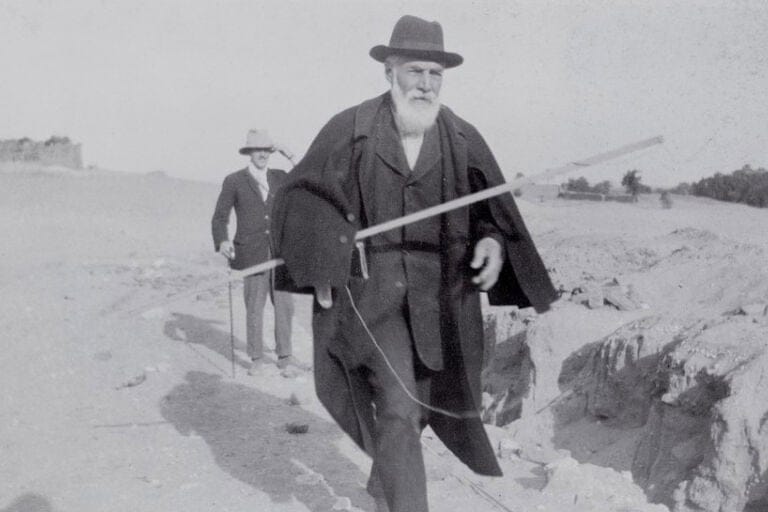
via Wikimedia Commons / {{PD-US-expired}}
His journal inspired awe in many of his readers. Through clever wordplay and imagery, he sparked curiosity and laid down knowledge that guided future research in Egyptology. In 1942, Mr. Flinders Petrie died in Jerusalem.
27. The Last Ancient Wonder
The Great Pyramid is the only one of its kind that still stands. Many of its secrets are still waiting to be discovered by modern-day adventurers and scientists.

Bettmann / Getty Images
When it comes to the seven wonders of the ancient world, the Great Pyramid of Giza stands out because it’s quite literally the only one left standing! Its construction was so far ahead of its time that it has survived for 4,500 years.
28. The Great Sphinx
The Great Sphinx is most likely a guard for the pyramids, but its exact purpose has not been discovered. It is a limestone statue that took about three years to finish. The ancient builders used copper chisels and stone hammers to create this magnificent piece of artwork.
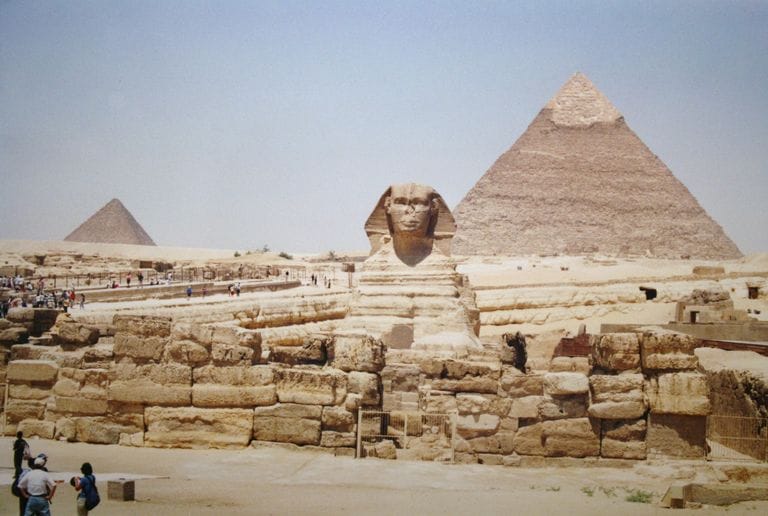
Flickr / Gary Todd | Public Domain
The Sphinx has the body of a lion and the head of a man. The face is meant to be that of Khafre, a pharaoh who reigned around 2,570 BCE. The missing nose is said to have been removed sometime between the 3rd and 10th centuries CE for reasons unknown.
29. Mummification Process
Mummification is a fascinating process that has been practiced for centuries. A priest wearing an Anubis mask would be the main embalmer. The process involved removing internal organs, drying the body in salt, and then placing the heart back inside the body.
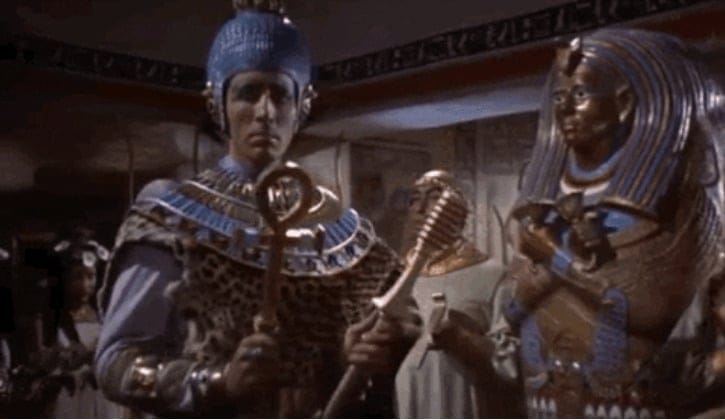
GIPHY
After 70 days, they would wrap it up in multiple layers of linen before placing it in the coffin. Mummification was reserved for those who were wealthy or part of the royal family simply because poor people couldn’t afford the process.
30. Nile River
The majority of Egypt’s pyramids are located west of the Nile. Some experts assume that it was done so the souls of the deceased could easily find their final resting place. They would embark on an afterlife boat ride that went downriver toward the spirit world.
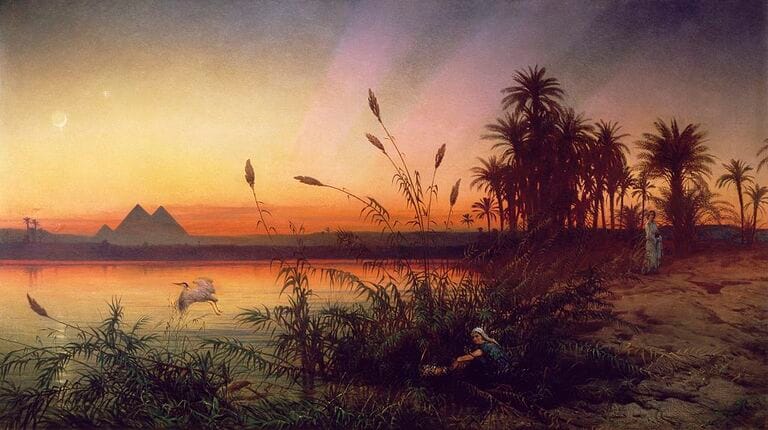
Photo by DeAgostini/Getty Images
Also, the Nile played an essential role in the creation of the Great Pyramid. An old diary describes how workers transported heavy blocks of limestone on wooden boats along this river and then carried them through waterways to where they would build the pyramid itself.
31. Perfect Celestial Alignment
In the 1980s, academic and writer Robert Bauval developed a theory that has since gained popularity. He showed similarities between hieroglyphics on three Giza pyramid structures and the constellation Orion’s Belt.
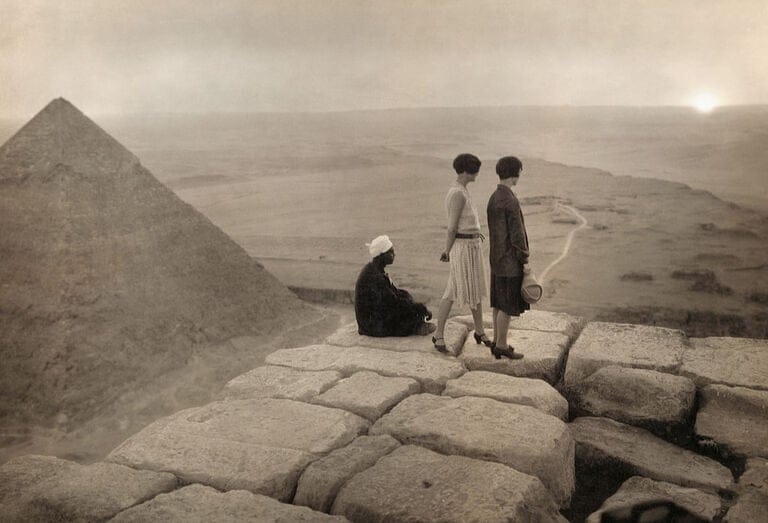
Photo by George Rinhart/Corbis via Getty Images
He expanded this line of thinking, and it became known as the Orion Mystery. Robert Bauval’s theory is based on the notion that “the pyramids were created to serve as a gateway to the stars.” Many experts are skeptical about this idea because it lacks what they see as rigorous evidence.
32. Egyptians Suffer from Lice
The ancient Egyptians had a problem with lice, and they used a number of different approaches when trying to deal with this annoying issue. One common trick was to shave their head, and this can be seen in much of the art that lines the temple walls.
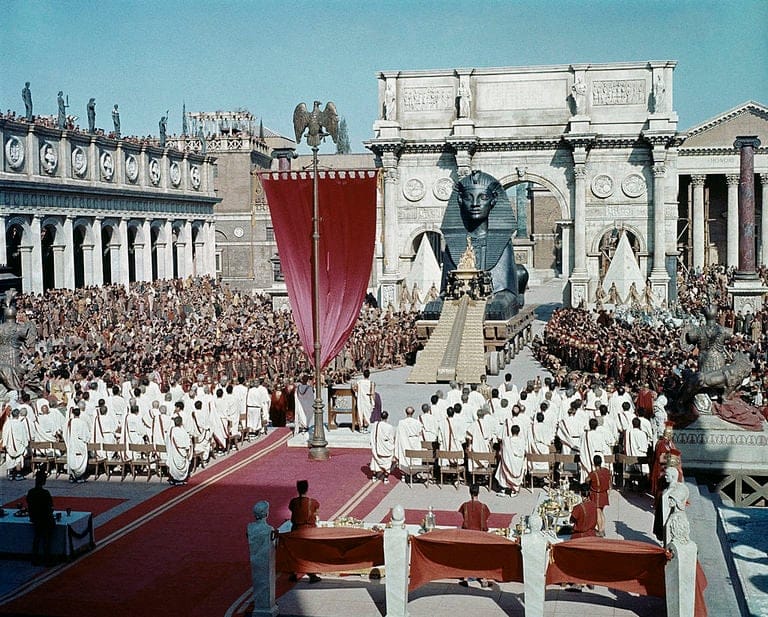
Archive Photos / Stringer / Getty Images
Lice were such a large problem for the people back then. The tombs were even said to be filled with lice – a thought that makes us shiver! The only relief that many Egyptians had left was to shave off their hair and hope for the best.
33. Men’s Way of Displaying Affection
Unlike modern society, ancient Egyptian men did not consider it shameful or inappropriate to display their affection for women. This can be seen in the festival of the pharaoh’s wife, where he takes his whole family with him on his trip – including all female members.
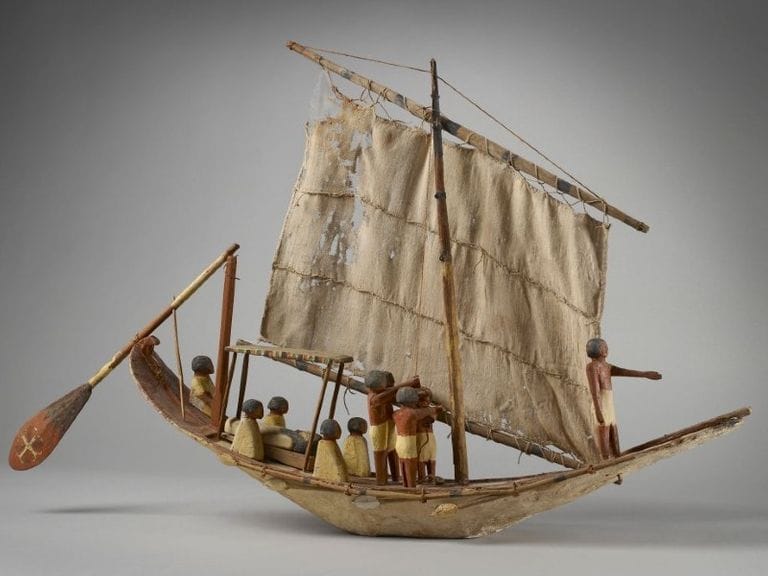
Ashmolean Museum / Heritage Images / Getty Images
Egyptian men interacted socially while out sailing at sea or during their (many) religious festivals. Sometimes they would invite women over for a conversation. If a mutual interest grew between both parties, then this would sometimes lead to romance.
34. Contraceptive Use
Women in ancient Egypt were faced with the difficult decision of which contraceptive method to use. Some chose to go with crocodile dung. Yikes! It was mixed with sour milk to form a paste that women would insert inside themselves to avoid unwanted pregnancies.
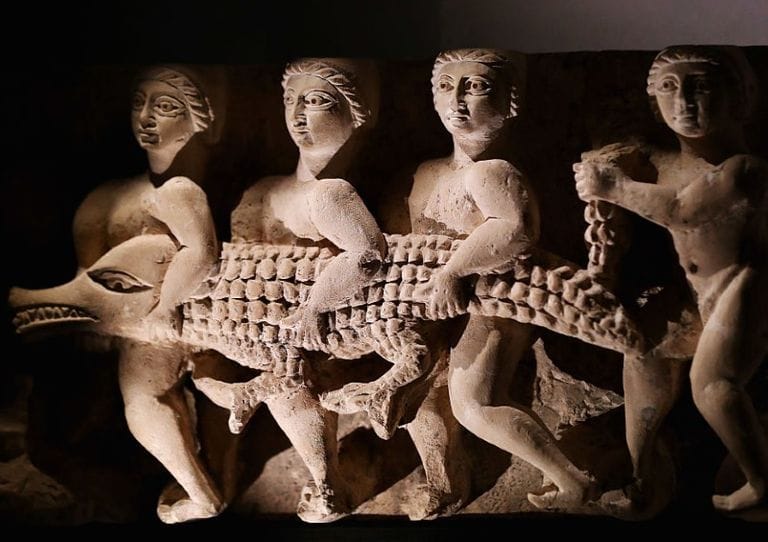
Dean Mouhtaropoulos / Getty Images
Although it might sound unpleasant, this method continued to be used until modern times brought around birth control pills and other contraceptives. Ancient Egyptian men were also known to use condoms made from linens to avoid diseases.
35. Necrophilia Issue
A more disturbing practice in ancient Egypt was necrophilia. It wasn’t just a nasty rumor. More than a few embalmers were caught engaging in the act with the recently deceased. For this reason, many people chose to keep particularly beautiful people for a few days before giving them to the embalmers.
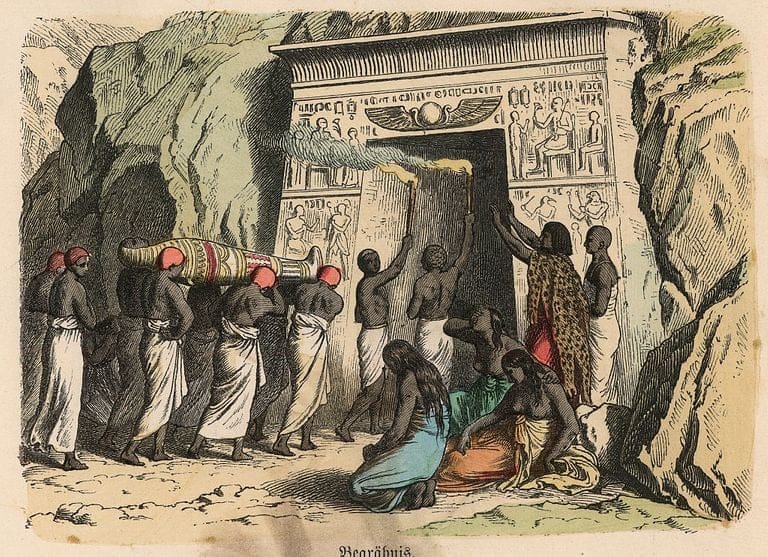
Stefano Bianchetti / Corbis / Getty Images
This disturbing practice is said to have originated with the goddess Isis, who was sister and wife to Osiris. According to myth, after Osiris was killed by his jealous brother, Isis was able to find all his body parts and conceive a child from them.
36. Behind the Paintings
The ancient Egyptians are usually thought of as muscular and slim because statues and paintings depict them that way. However, this might not be entirely accurate. It’s possible that they suffered from body dysmorphia and ordered the paintings to be that way so everyone could admire them.
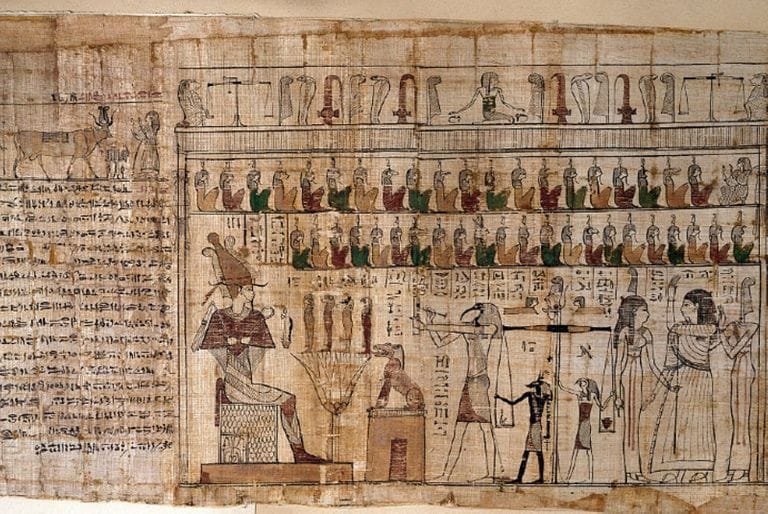
Leemage / Corbis / Getty Images
Ancient Egyptian paintings also display the racial diversity of ancient Egyptian society. Many of the men had dark complexions and black hair, whereas a lot of the women had lighter complexions and even blond hair.
37. Egyptian Health Maintenance
In ancient Egypt, people believed that fecal matter caused disease and had to be purged regularly if one wished to stay in good health. Therefore, many individuals would undertake enemas three days out of every month.
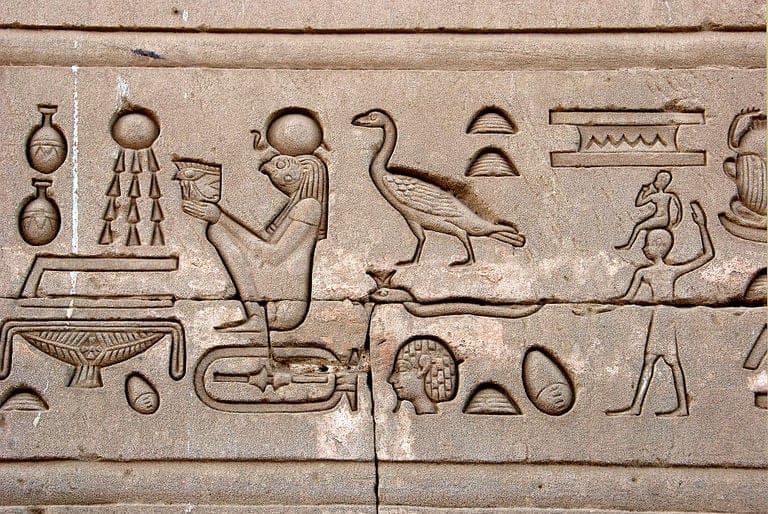
Leemage / Corbis / Getty Images
The ancient Egyptians were obsessed with the idea of cleanliness and healthy living. Documents from 1,600 BCE show, in detail, how pharaohs had servants whose job it was to conduct enemas for them as part of their daily routine. Talk about a dirty job!
38. Thank You, Thoth
The first medical description of an enema dates back to ancient Egypt. Around 1,550 BCE, it was recorded in the Ebers Papyrus alongside other information about herbal remedies. According to legend, the god Thoth – mostly known for magic, writing, and science – is said to have invented it.

CM Dixon / Heritage Images / Getty Images
Remarkably enough, this medical information turned out to be pretty accurate. Modern science has recently come around to understanding just how important enemas can be. It seems we have Thoth to thank for that.
39. Testing Female Fertility
Ancient Egyptian doctors had a few ways to test a woman’s fertility. One way was by applying oil to her entire body and then having her lay down overnight while covering herself. If she woke up looking fresh, then her body was ready for childbearing.
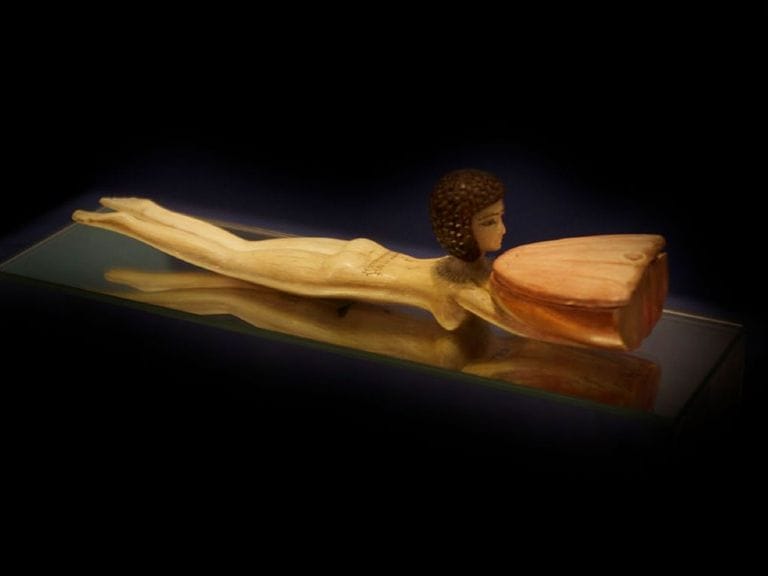
CM Dixon / Heritage Images / Getty Images
Another method was to use garlic or onion placed near the mouth. If a woman could smell it while sleeping, then she was fertile. Many cultures around the world have interesting rituals and beliefs about fertility and reproductive health issues.
40. Bathroom Pains
Schistosomiasis is a disease that damages the internal organs of men and women. Theodore Maximilian Bilharz, an Austrian pathologist, did extensive research on the schistosomal worms that were around in ancient Egypt. He found that many people’s bladders had parasitic worms.

Daniel Berehulak / Getty Images
Schistosomiasis was a rough disease that caused an awful burning sensation and other issues we won’t mention! Sometimes these nasty symptoms would escalate to the point where some men thought they were menstruating.
